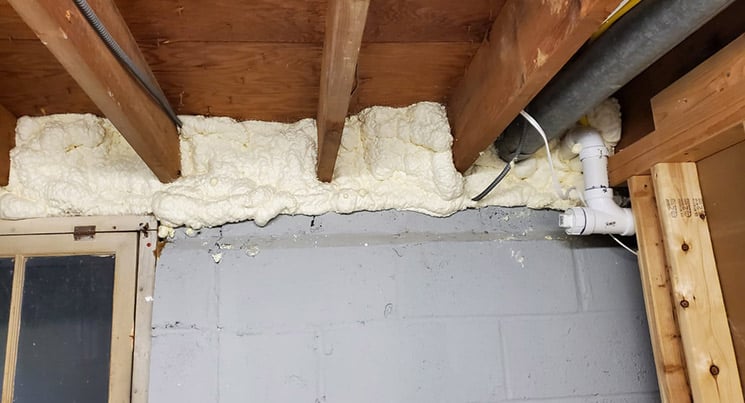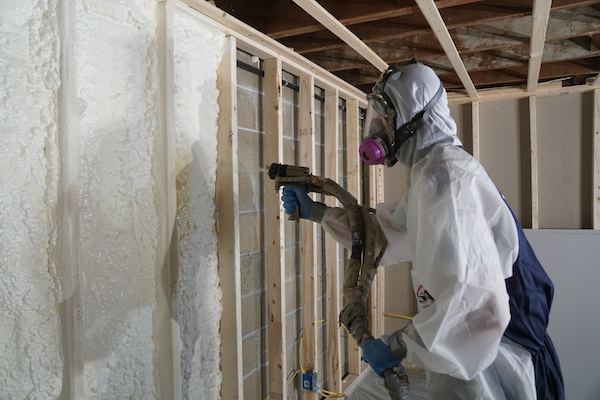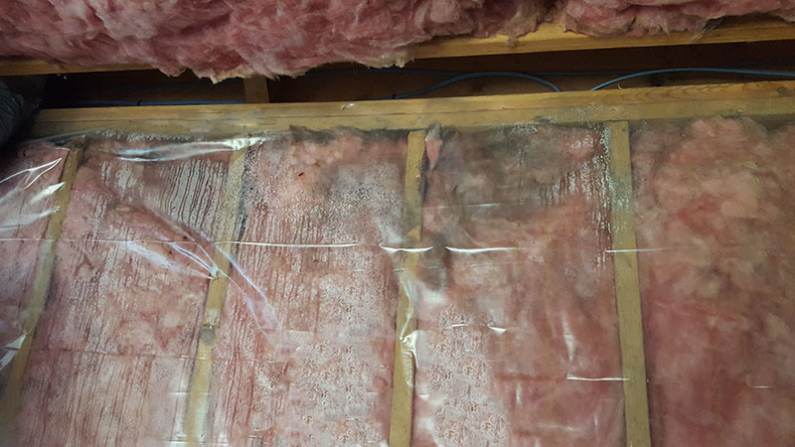
Basement insulation plays a critical role in preventing mold by controlling moisture levels and minimizing condensation. The primary function of insulation in this context is to maintain stable wall surface temperatures, reducing the risk of humid air reaching dew point and forming water droplets—conditions that allow mold to thrive.
When properly selected and installed, insulation forms a barrier against thermal bridging, traps warm indoor air away from cooler basement walls, and restricts vapor migration. This guide explains how different insulation materials perform in moisture-heavy environments and how they contribute to mold prevention, using detailed comparisons and practical insights.
Why Basement Insulation Matters for Mold Prevention
How Moisture Enters Basements
Basements are naturally vulnerable to moisture issues due to several structural and environmental factors. Common sources include:
- Groundwater seeping through walls or floor slabs
- Poor drainage or foundation waterproofing
- Indoor humidity rising from showers, cooking, or appliances
- Air leakage carrying moisture to cool surfaces
- Soil temperature differences causing condensation
The interaction between warm, moist indoor air and cold basement walls frequently leads to condensation. If left unaddressed, these damp surfaces provide an ideal environment for mold growth.
What Proper Insulation Does
- Stabilizes Surface Temperatures
Insulation reduces the temperature differential between basement air and wall surfaces, reducing the chances of condensation. - Acts as a Vapor Control Layer
Insulating materials can act as vapor retarders, limiting moisture diffusion from indoor air into walls. - Reduces Moisture Accumulation
It prevents water from accumulating in porous materials like wood framing or drywall, which mold can colonize.

Common Types of Basement Insulation
Choosing the correct insulation material is essential for long-term mold prevention. Materials must withstand constant humidity, limit air and vapor movement, and resist microbial growth.
Comparison Table: Insulation Materials for Basement Mold Control
| Insulation Type | Moisture Resistance | Air Sealing | Mold Resistance | R-Value (Per Inch) | Installation Method |
| Rigid Foam Board (XPS) | High | Moderate | High | 5.0 | Surface-mounted |
| Closed-Cell Foam | Excellent | Excellent | Excellent | 6.0–7.0 | Spray-applied |
| Mineral Wool | Moderate | Poor | Good | 3.7–4.3 | Friction-fit or batts |
| Fiberglass Batts | Poor | Poor | Low | 3.1–3.4 | Between studs |
| Foil-Faced Polyisocyanurate | High | Moderate | Good | 6.5–6.8 | Surface-mounted |
Bonus Tip
Closed-cell foam provides both insulation and air sealing in one application. It also resists water absorption and has antimicrobial properties, making it one of the best options for below-grade environments.
Key Technical Data
Technical Characteristics of Common Insulation Materials
| Property | Closed-Cell Foam | XPS Foam Board | Mineral Wool | Fiberglass Batts |
| Water Absorption (% by volume) | <2% | 0.3–1.0% | 1–3% | 5–10% |
| Vapor Permeance (per inch) | <1.0 perms | 1.1 perms | 30–50 perms | 50–90 perms |
| Mold Growth Potential | Very Low | Low | Moderate | High |
| Installation Complexity | Moderate | Low | Low | Very Low |
| Suitable for Direct Contact | Yes | Yes | No | No |
Bonus Tip
Avoid using vapor-permeable materials like fiberglass or open-cell foam in direct contact with concrete. These allow moisture to pass through and hold water, creating a breeding ground for mold.
Things to Consider Before Making a Decision
Before choosing a basement insulation solution, it’s important to assess multiple structural and environmental factors. A one-size-fits-all approach often results in mold problems rather than solving them.
Evaluate Existing Moisture Issues
- Look for signs of efflorescence (white chalky stains), which indicate water migration
- Check for musty odors or visible mold patches
- Use a moisture meter to test concrete wall dampness
Wall Composition and Condition
- Cracked, porous, or unfinished concrete needs sealing before insulation
- Older homes may lack vapor barriers or drainage systems
Climate Zone
Colder climates require higher R-values and vapor control strategies. Warmer zones may benefit more from air sealing and moisture deflection.
Use of the Basement
- Conditioned (living space) basements demand continuous insulation with proper finishes
- Unconditioned spaces can use more basic materials but still need moisture control
Bonus Tip
Always install a capillary break (e.g., rigid foam or polyethylene sheeting) between the concrete slab and wall framing to prevent moisture from wicking into organic materials.
Installation Strategies for Mold Prevention
Interior Wall Insulation
This is the most common and cost-effective approach for finished basements.
- Step 1: Seal cracks and apply waterproof coating to walls
- Step 2: Install rigid foam or closed-cell foam directly against concrete
- Step 3: Seal seams with compatible tape or caulk
- Step 4: Frame walls using treated lumber with no vapor-retarding batt insulation
- Step 5: Leave a small air gap for drying when using mineral wool
Exterior Wall Insulation
Less common but more effective at keeping moisture out.
- Requires excavation and exterior foam board or waterproof panels
- Prevents water entry at the source
- Best for new construction or full renovations

Common Questions About Mold and Insulation
Can insulation itself grow mold?
Only organic materials such as fiberglass batts or cellulose are prone to mold if they get wet. Inorganic materials like foam or mineral wool resist mold growth.
Is a vapor barrier always needed?
Not always. A vapor barrier may trap moisture between the concrete and insulation if not properly placed. In many cases, foam board insulation serves as a sufficient vapor retarder.
What R-value should be used in basements?
Most codes recommend R-10 to R-15 for basement walls. Closed-cell foam and XPS can meet this with just 2–3 inches of thickness.
Can I insulate a damp basement?
Not directly. Moisture issues must be resolved before insulation. Otherwise, mold will grow behind the insulation layer.
Basement Insulation and Mold Prevention FAQ
How does basement insulation stop mold?
It controls the temperature and vapor movement, reducing condensation and preventing surfaces from staying damp—two key conditions mold needs to grow.
What insulation type is worst for mold control?
Fiberglass batts. They absorb water easily, lose their insulating properties when wet, and provide an organic surface for mold growth.
Is mold prevention possible without insulation?
Unlikely. Dehumidifiers and fans reduce moisture but don’t stop condensation caused by temperature differences. Insulation is essential to long-term prevention.
Should I remove old insulation if I find mold?
Yes. Remove and safely dispose of moldy materials. Also address the source of the moisture before reinstalling new insulation.
What’s the best insulation for a finished basement?
Closed-cell foam offers the highest protection against mold, vapor, and temperature fluctuations. It also adds structural strength and reduces air leaks.
Make the Right Decision
Insulating your basement isn’t just about keeping the space warm—it’s a vital step in protecting against mold and structural damage. Choose materials that actively resist moisture, seal air leaks, and maintain stable temperatures. Before insulating, identify and resolve any existing water issues to avoid trapping moisture behind walls. For long-term performance and indoor air quality, take the time to match insulation types with your climate zone, wall conditions, and basement use.
By understanding how insulation works as part of a moisture-control strategy, you can make informed decisions that protect your home and health.








